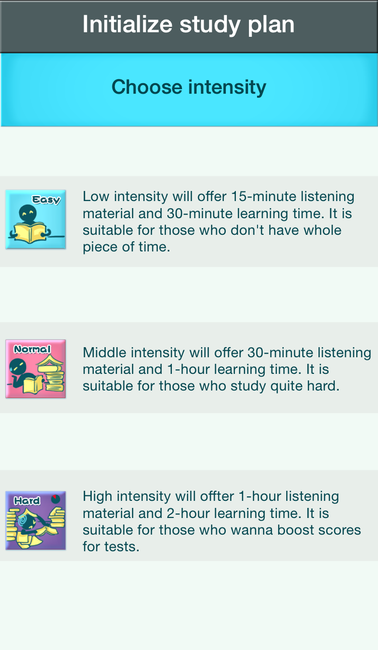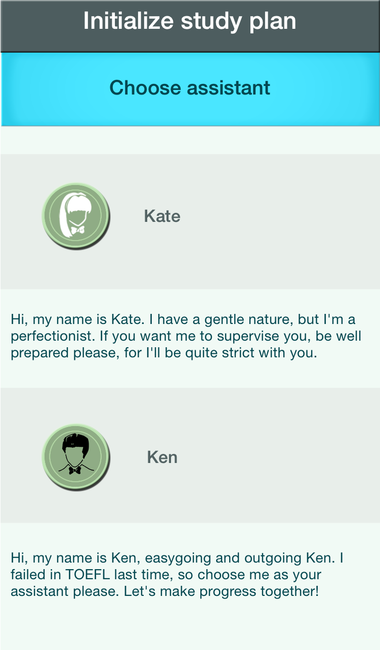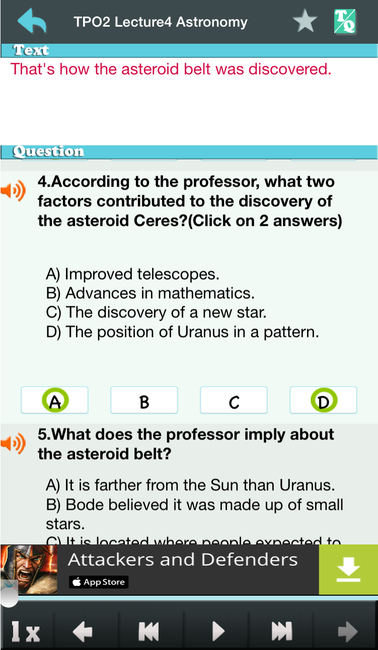Instructional Design (TOEFL Listening)
1. Radar Chart
Based on Hung et al.’s (2013) theory, I have created a multi-dimensional model to assess the listening comprehension ability and metacognitive awareness of EFL learners in TOEFL classrooms. A variety of elements are required for a student to be a successful listener in a TOEFL listening section: preparation of scenario vocabulary, background knowledge; recognition of vocabulary, syntactic order, signal tone and intonation, signal words, and emotions; strategy of note-taking, summarization of ideas, short-term memory, and logical thinking (The Official Guide to the TOEFL). I hope this model helps identify a learner’s strength and weakness in greater detail and allows teachers to provide learners with specific strategies they can use to develop their linguistic competence.
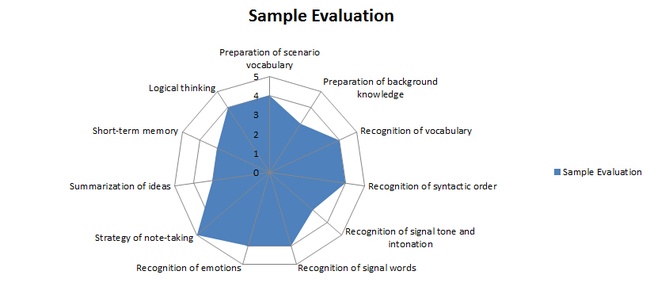
This model can also be used to compare the learning outcomes of different students. The chart below reflects students’ diverse capabilities of accepting and internalizing new knowledge. It can be used as a reference to improve the design of curriculum and pedagogical practice.
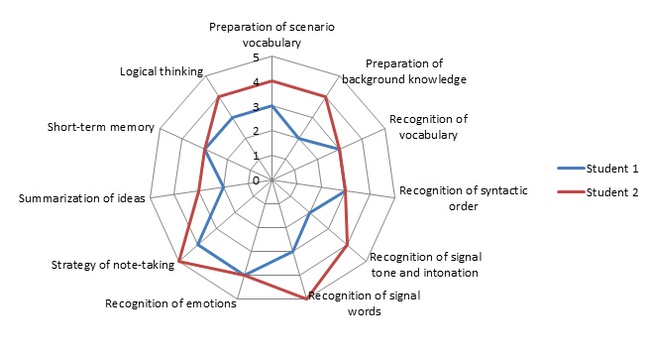
2. The Plan TOEFL Listening App
This app was designed to help TOEFL learners develop a personalized learning plan to monitor their performance. In this regard, the app motivates learners to initiate their own learning process. The app well adapts student diversity and allows learners to choose the intensity of the learning and select a virtual assistant to help them. Moreover, emotional engagement will be established in the learning process through the close relationship between the learners and the app and this, in turn, will “[affect] the nature of the literacy being learned…” (Street, 2003, p. 78). The learning materials in this app have all been chosen from TPO, so the consistency of class learning and after-class activity are guaranteed.
